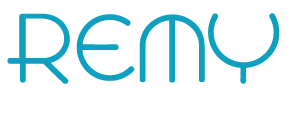Targets define requirements
10/2020
When approaching a choice and setting requirements for your grow light system, it is important to first define clear targets. But wait, let's take a step back, because at the very base when approaching a venture of setting up a growing facility it is important to define clear targets. And that's before you even knew you needed grow lights. In my opinion, clear target definition is critical, but we are not looking to define everlasting targets, it is a component that is under constant self-criticism and fine tuning. It's important to invest the needed time and effort until you reach clear and justifiable targets, as this will be your compass, it will align future decisions to serve our targets and advance us to their realization. Now let's get back to lighting. Lighting is a tool that has a direct effect on the growing results. That's why it's important to first understand what we are trying to achieve and only then to define requirements of our lighting system. Current LED technology and the capabilities it brings with it repositioned lighting from a limiting factor in the growth protocol to an enabling factor. In today's day and age, a clearly defined production target can receive an engineered solution which will produce it. |
If the plan is to sell inflorescence it requires paying attention to different things than if we are making a light plan for growing flowers intended for extract. If we plan to grow the best flower in the market with a jaw dropping cannabinoid expression and terpene and flavonoid profile that will make people lick their fingers, it will require a different solution than planning a system for a good quality flower at a bargain price. A business plan based on production capabilities of 200 grams per square meter, will get a different lighting array than a facility with production targets of 800 grams per square meter. Define a clear precise target for your growing capabilities, it will increase chances of getting a light solution and implementation plan which will provide what you need. Remember, nothing stands alone in a growth protocol, everything affects everything else. I imagine it as a spiral for growth protocol optimization - we change one parameter and adjust all the rest to work together in the best way and it never ends. That's part of the fun. What's important to remember is that when you define a target and receive a light plan to serve it, you must address other systems in your facility and their capabilities of affecting the growing space and at which resolution. I would keep going about the effect it will have on marketing targets derived from commercial and operational targets, but let's leave that for another post. |  |
For an efficient process, I recommend this flow: |
|
|
Find a supplier with the capabilities to understand and analyze your targets, guide you in the process, make a light plan, supply accordingly and support up to the point of achieving the targets. Better yet, find a supplier that has already done it a few times before. Look for references, talk to people about him and maybe even talk to his clients. My approach has always been that shortening time to optimization is worth more than any system installed in the growing facility. |
 | If I want to make a short summary; define targets, list requirements according to those targets, make sure it aligns with your expected OPEX and cooperate with someone who understands what you're trying to achieve, or even someone that will help you get there. Obviously, everything here is at the superficial level and does not represent the depth you need to get into in reality, but that's the general idea. In my opinion. I wish you persistence combined with flexibility and self-criticism which will allow you to make the required constant adjustments and fine tuning. I wish us all good light. |
